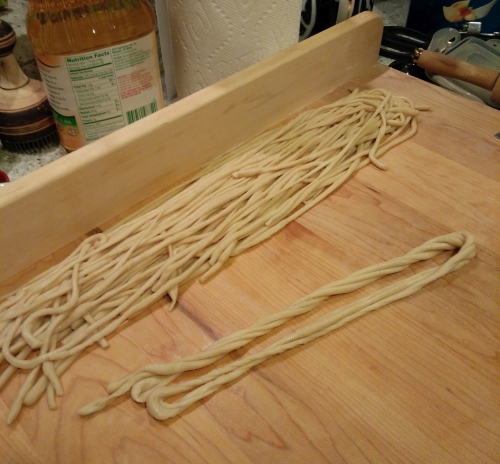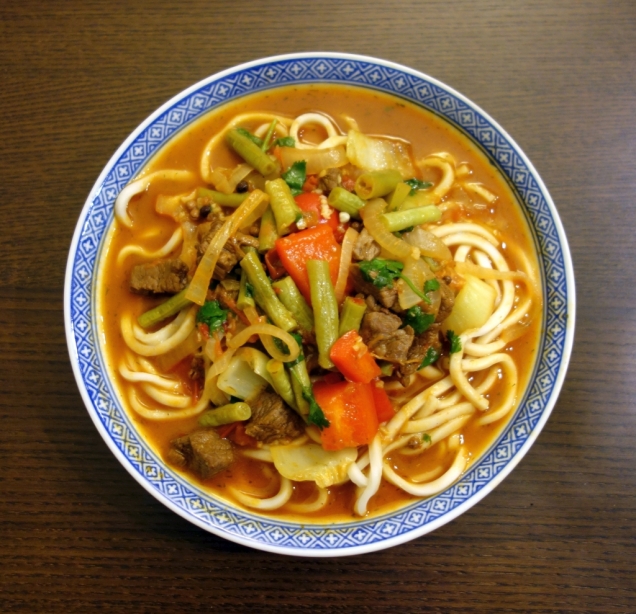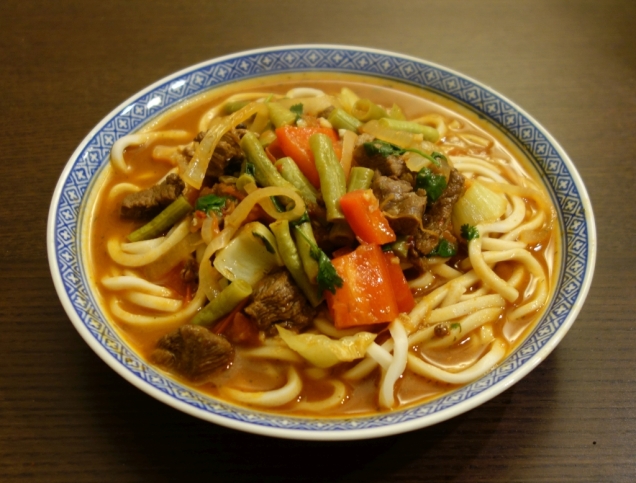
Laghman noodles have a special place in my heart. If you go to Xinjiang, chances are you will eat lagman noodles – not only once, but many times, and maybe even every day. In fact, I’m pretty sure there were days I ate lagman more than once in a single day.
Laghman is probably one of the most Uyghur of Central Asian foods – while foods like kebab, plov, and naan can be claimed by many nationalities, noodles are an Uyghur specialty. The etymology of “laghman” is open to debate, but most agree it originally comes from Chinese 拉面(la mian), or literally “pulled noodles.” Hand-pulled Uighur noodles are a wondrous thing – thick with a nice bouncy chew to them.
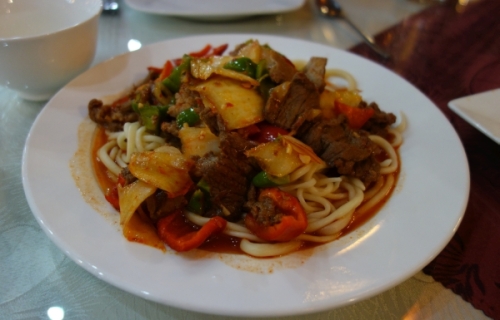
There are as many different varieties of laghman as there are people making laghman, because there is no fixed recipe. It is noodles topped with a sauce of meat and vegetables. Basically anything is game – lamb, beef, chicken, green beans, bell pepper, bok choy, squash – whatever fresh vegetables are on hand. However, there are a few common points: onion, garlic, tomato sauce, and bell pepper are almost always present.

I have tried for a long time to recreate the taste of laghman noodles in Xinjiang. It is possible that after 7 years my memories of the taste have faded. So far, this is the closest version I’ve made.
This recipe is adopted from Abdulaziz Salavat’s videos (making the noodles and making the sauce). Uyghurs make pulled noodles differently from Chinese (who generally use the folding method, and use flour instead of oil to keep it from sticking). Abdulaziz, an experienced chef, makes noodle pulling look easy, but it is actually quite difficult. His noodles are made by rolling the dough with one hand and pulling with the other. However, if your technique or dough are off, your noodles will be uneven, too thick, or break off.
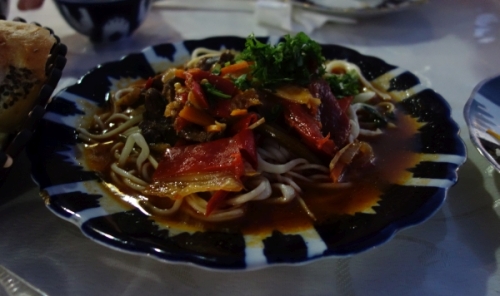
If you don’t want to pull noodles by hand, you can eat this dish with fresh flour-and-water noodles sold in Asian groceries. I make it this way for quick weeknight meals (making noodles by hand is a lengthy process). In NYC, I buy the Twin Marquis thick noodles sold at Hong Kong Supermarket or other Chinese groceries. They are a decent substitute for hand-pulled noodles, although the taste is a bit different. If nothing else is available, you could use udon noodles, but they aren’t the right shape/texture.
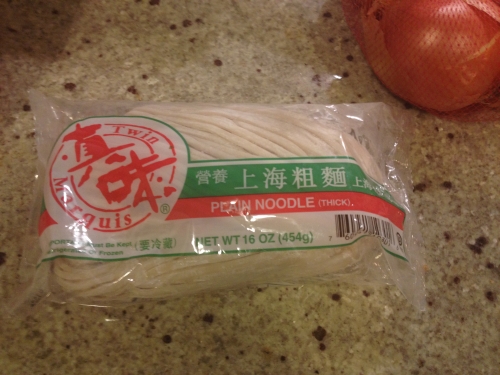
Ingredients
Noodles:
Flour
Salt
Egg
Oil
(or buy fresh premade noodles)
Sauce:
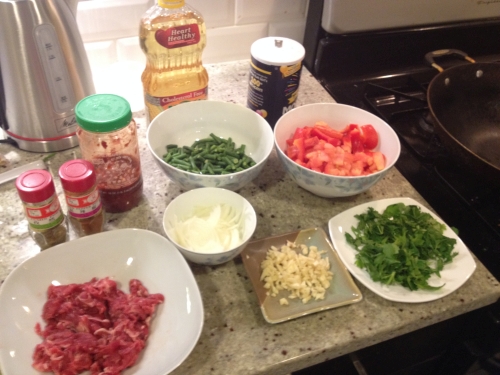
Meat (lamb or beef)
Onion
Tomatoes
Garlic
Chinese celery (or regular Western celery in a pinch)
Tomato paste
Chili paste – I use the chili garlic sauce commonly sold at Asian groceries.
Salt
Soy sauce
Chinese black vinegar
Fresh vegetables – Bell pepper, green beans, bok choy (just the white part, not the leaves). Feel free to substitute with whatever is fresh, although bell pepper at a minimum is a must.
White pepper
Sichuan pepper (“hua jiao”) – optional, but gives a unique flavor
Directions
Noodle Making:
1. Make a dough of flour, salt, water, and egg, kneading well for 10-15 minutes. Then let it rest covered for 30min-1hr, making sure the dough does not dry out. After resting it, form it into a rectangular shape about 1cm thick and lightly brush with oil.
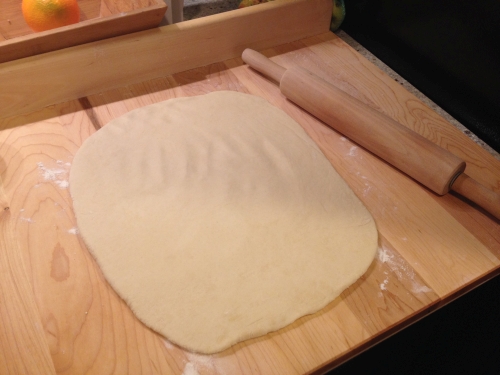
You might wonder about the point of resting dough with no yeast in it. It makes the dough easier to roll and stretch out later. Dough that is not rested tends to be resistant to shaping and difficult to work with.
2. Cut the dough into long pieces and roll them into a smooth cylindrical shape. You want these cylinders to be as smooth and regular as possible, because they will be stretched out into noodles and any imperfections will be magnified. Lightly oil a large round plate. Starting from the center, spiral the dough pieces over the entire plate. Lightly brush the coiled dough with oil. Then let these sit in the fridge covered in plastic wrap for at least 5-10 minutes.
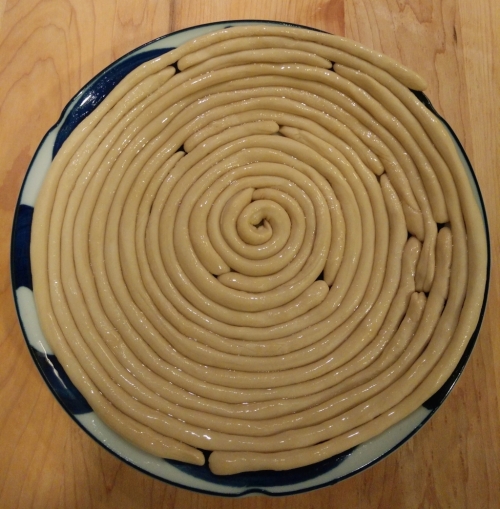
What is the purpose of the magic coil? After making laghman many times, I’ve concluded that it 1) Gives the initial round shape to the noodles, to be pulled out later, and 2) allows you to oil them all at once, which is important so they don’t stick later, and 3) allows you to conveniently store them in a stable state that won’t easily dry out.
3. In this step I recommend you keep the dough coil in the fridge covered and work piece by piece, so the dough doesn’t dry out. Take a dough piece and roll it between your fingers to round out any uneven spots. Pull out the noodle piece and make it into a loop, holding both ends in one hand. Dangling the dough down from the ends, spin the bottom so it twirls up and braids itself. Then holding both ends again, pull it out, waving it up and down, and smacking it against the table. Fold the dough over on itself again and repeat the twirling and pulling. The noodles should be pretty thin by now – cut them so they’re a reasonable length and untwirl them. Don’t worry if they seem too thin, as they will swell up when you cook them.
Don’t fret if you end up breaking some noodles in the process – after they’re cooked you won’t notice much how long the pieces are. However, if your dough is constantly breaking, it could be mean that it wasn’t kneaded enough to begin with. After the noodles are finished, either cook them immediately or cover them with plastic wrap and store in the fridge – you don’t want them to dry out.
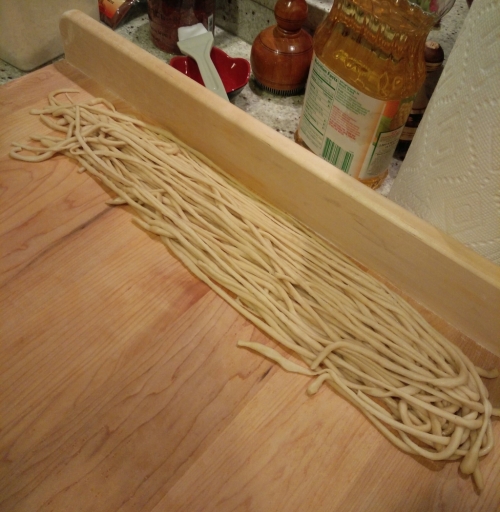
4. Bring water to a rolling boil in a cauldron and lightly salt. Put in the noodles – don’t worry if it appears like they have stuck together in a mass of dough. If the dough was oiled correctly in previous steps, they will come apart. Poke with some chopsticks to separate out the noodles as they cook. After the water has returned to a rolling boil for a few minutes, taste a noodle – it should be al dente with a nice firmness to it – drain the noodles and rinse them with cold water in a sieve. Plate the cooked noodles and keep them aside for the sauce.

Making Sauce
Prep: Slice the onions into half moons. Dice the garlic and celery leaves. Dice the tomatoes. Chop all the fresh vegetables into squares. Cut off the ends of the green beans and cut them into fairly small pieces (maybe 1/2 inch long). Optionally, marinate the meat with corn starch and soy sauce – this can help make it more tender.
1. Heat the wok to high heat, heat oil, then stir fry the meat over high heat. You will cook everything on high heat in one go. After the meat is nicely browned, add onions, cook till soft and golden brown, then add a splash of black vinegar.
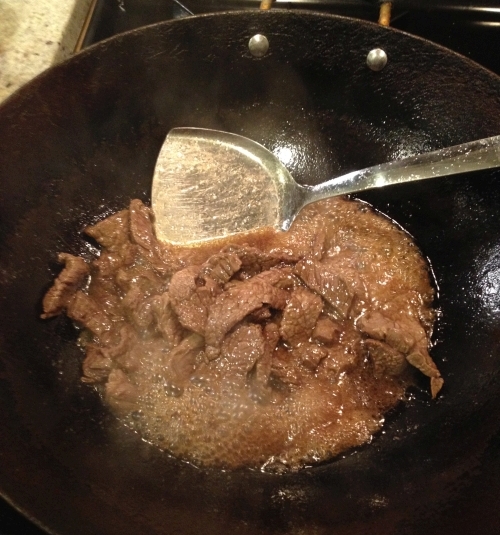
2. Add 2-3 big spoons of tomato paste and 1 spoon of chili garlic paste, mixing everything well.
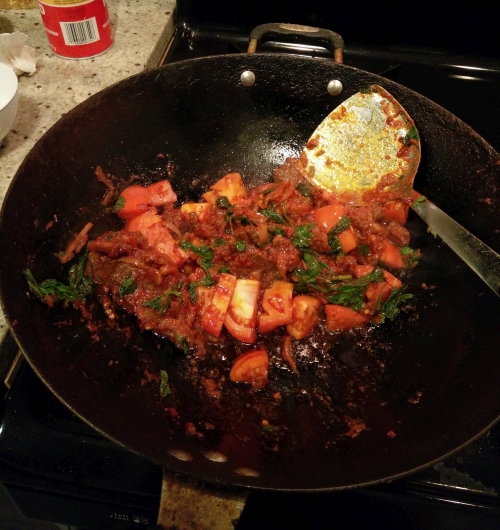
3. Add the celery, tomatoes, bok choi, bell pepper, green beans, and any other vegetables you want to add. Stir a bit after adding each vegetable.
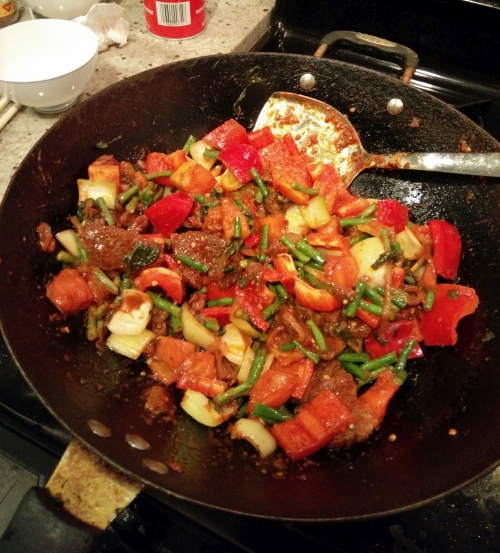
4. Add some water or broth to make a sauce. After the water starts to boil, reduce to a simmer and put the meat back in if you removed it earlier. Add vinegar, soy, Sichuan pepper, and salt to taste. Finish it all off with some garlic, mix, and simmer a bit.

